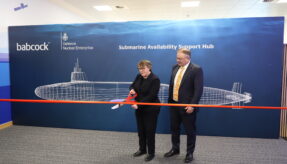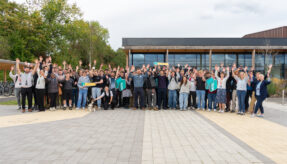
The Defence and Security Accelerator (DASA), and Nuclear Decommissioning Authority (NDA) are pleased to announce that four innovators have been awarded a share of £2M funding to develop remote sensing innovations to help monitor legacy nuclear sites.
The funding, secured from the Remote Monitoring of Sensitive Sites: Phase 2 Themed Competition, will allow the organisations to develop technologies that can form the basis of an Autonomous Security Alarm and Interdiction Network (ASAIN) to remotely keep the sites secure.
The funded technologies will autonomously monitor, track and detect security breaches. This not only keeps human operators out of harm’s way, but also provides the information they need to inform their response.
The competition will focus primarily on solutions for lower risk sites where defueling is nearly complete, which can be implemented when they no longer contain any nuclear material and when ‘nuclear security’ measures are no longer proportionate, so costs can be reduced.
Andrew Gray, Innovation Delivery Manager, Nuclear Decommissioning Authority said: “We are excited to be working with DASA on this competition which has generated a huge amount of interest across many different sectors.
“Keeping our sites safe and secure is absolutely critical to delivering our mission. Our estate spans 17 nuclear sites across the UK, made up of around 950 hectares of designated land on which over 800 buildings are located.
“The innovative solutions will explore how we can continue to keep our people and communities safe, and meet our regulatory obligations, through remotely augmenting our existing arrangements.
“We are continually seeking cutting edge technologies and innovative solutions to enable us to decommission our sites and deliver effectively and efficiently for the public.”
Research is an essential part of decommissioning programme and each year the NDA group invest over £100M in Research & Development (R&D). The aim is to solve the challenging technical problems more effectively, more efficiently, and, where possible, for less cost.
Initially £1.5M of funding was being made available, however the high quality of the proposals and the diversity in the submissions allowed for a fourth project to be funded taking the total value to £2M.
The four successful organisations are:
Operational Solutions Ltd
This project aims to take a range of intelligent, automated technology solutions that have been developed to meet the challenges of Uncrewed Aerial Systems (UAS) and Counter-UAS (CUAS) management, and utilise them to create an autonomous security solution for High Security Areas (HSA).
Espanaro Ltd
The project aims to provide a cutting-edge autonomous security alarm and interdiction network for remote monitoring of sensitive sites in resource constrained environments within the Defence and Security sectors.
ISS Group Ltd
A multi-domain system, combining ground and air-based sensors with cutting edge technologies for threat detection, identification and interdiction all delivered through a single, intuitive and easy to understand User Interface available for local, central and remote security control centres.
Archangel Imaging
This project aims to develop a mobile, infrastructure-independent, autonomous surveillance system, augmented with a range of integrated sensors, effectors and UAVs to maintain a technological edge.
The funded suppliers will start testing their innovations in a live environment on NDA sites in 2025 and will then be invited to a demonstration event in early 2026, where they will demonstrate their systems to stakeholders from across the Defence and Security and Nuclear Decommissioning communities.
The competition follows on from Phase 1, which oversaw £700,000 in funding allocated between 10 innovative organisations.
Learn more about the Remote Monitoring of Sensitive Sites: Phase 2 here
If you would like to join our community and read more articles like this then please click here








